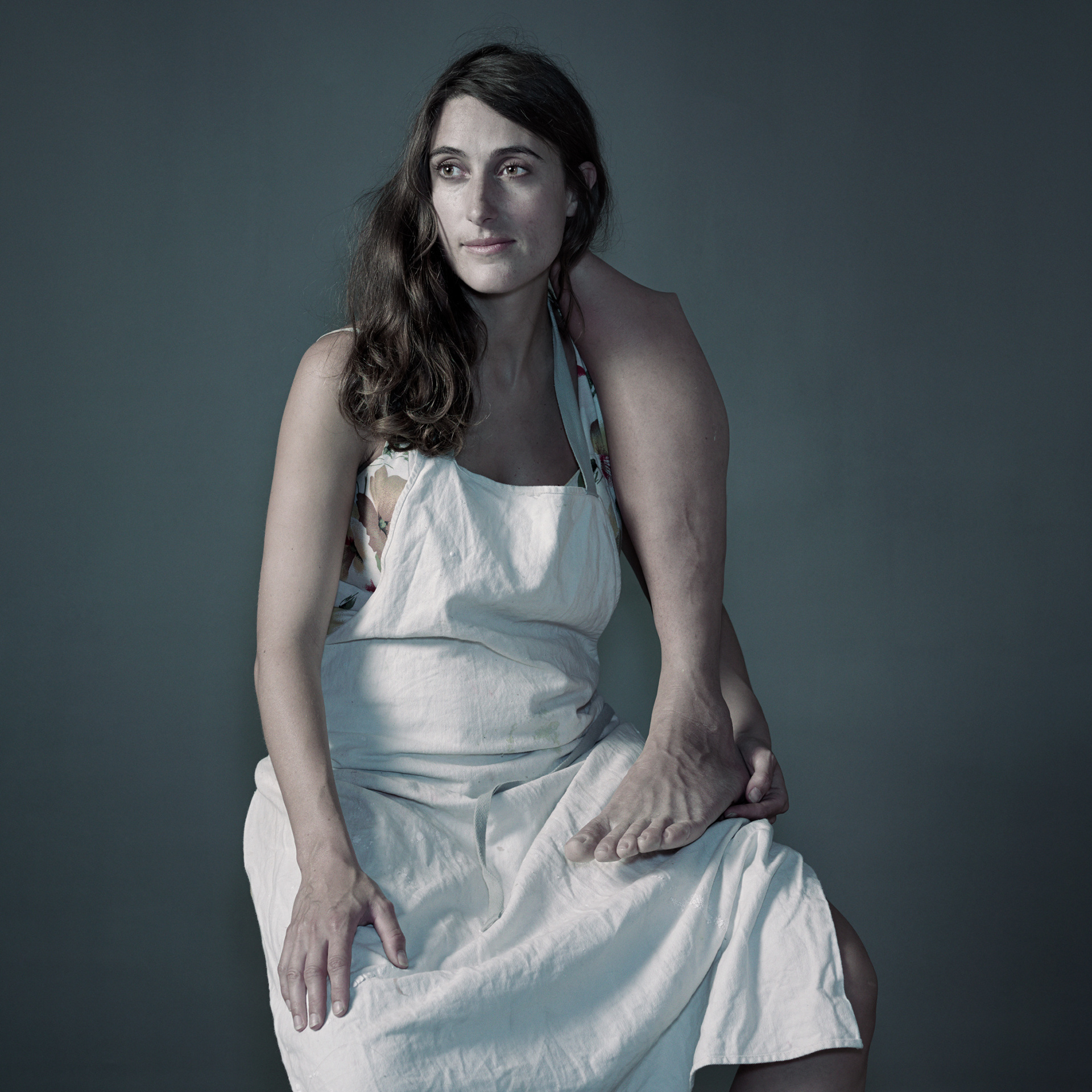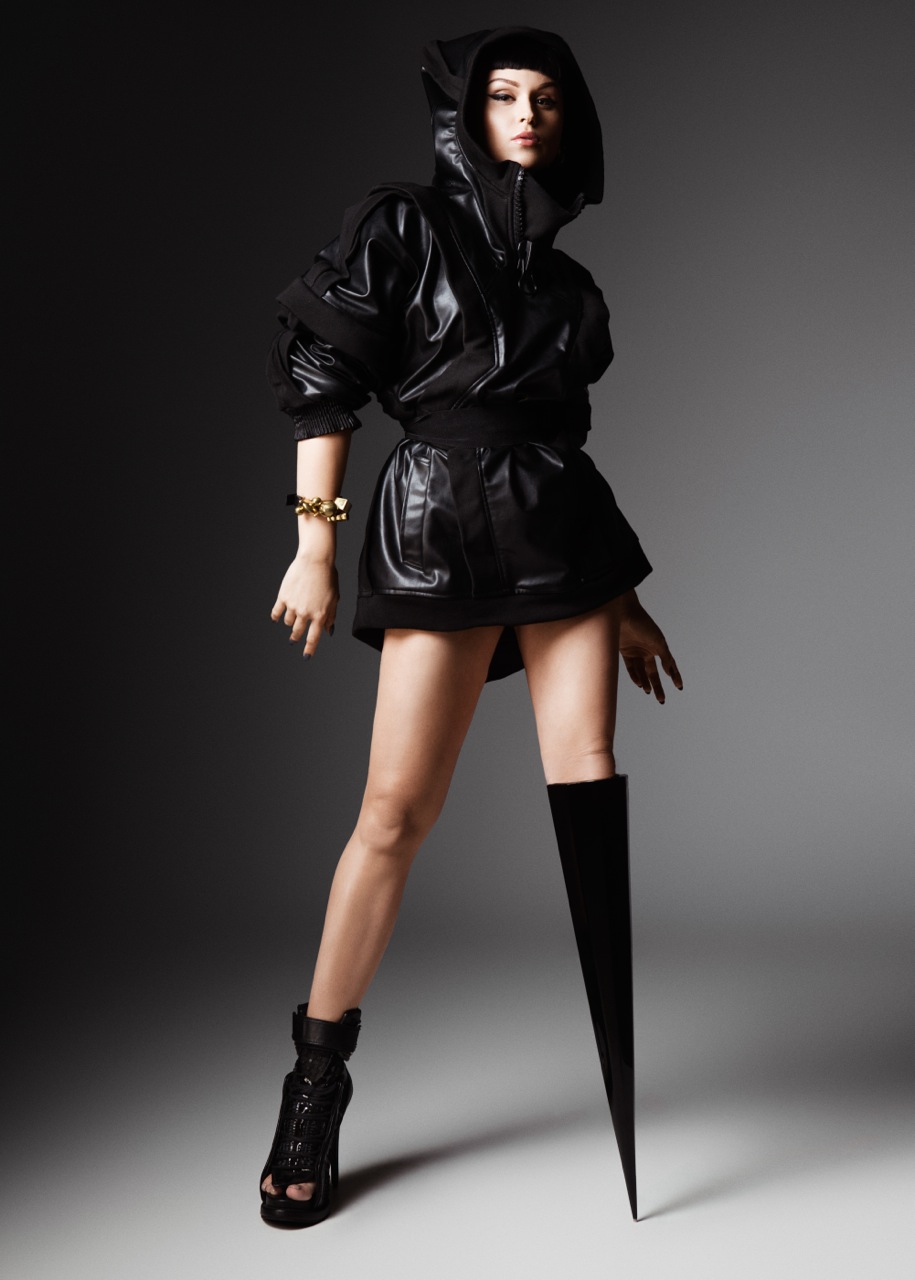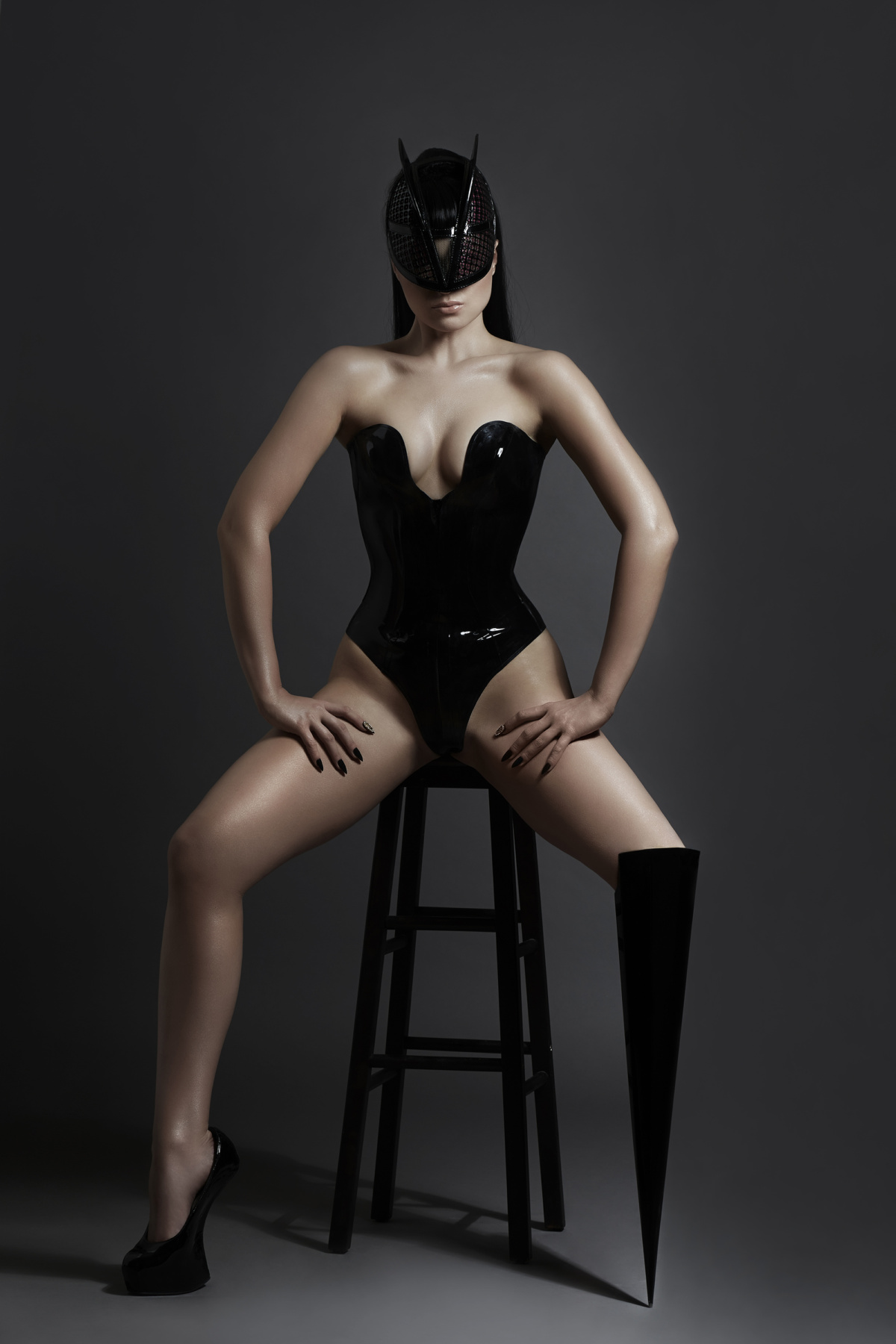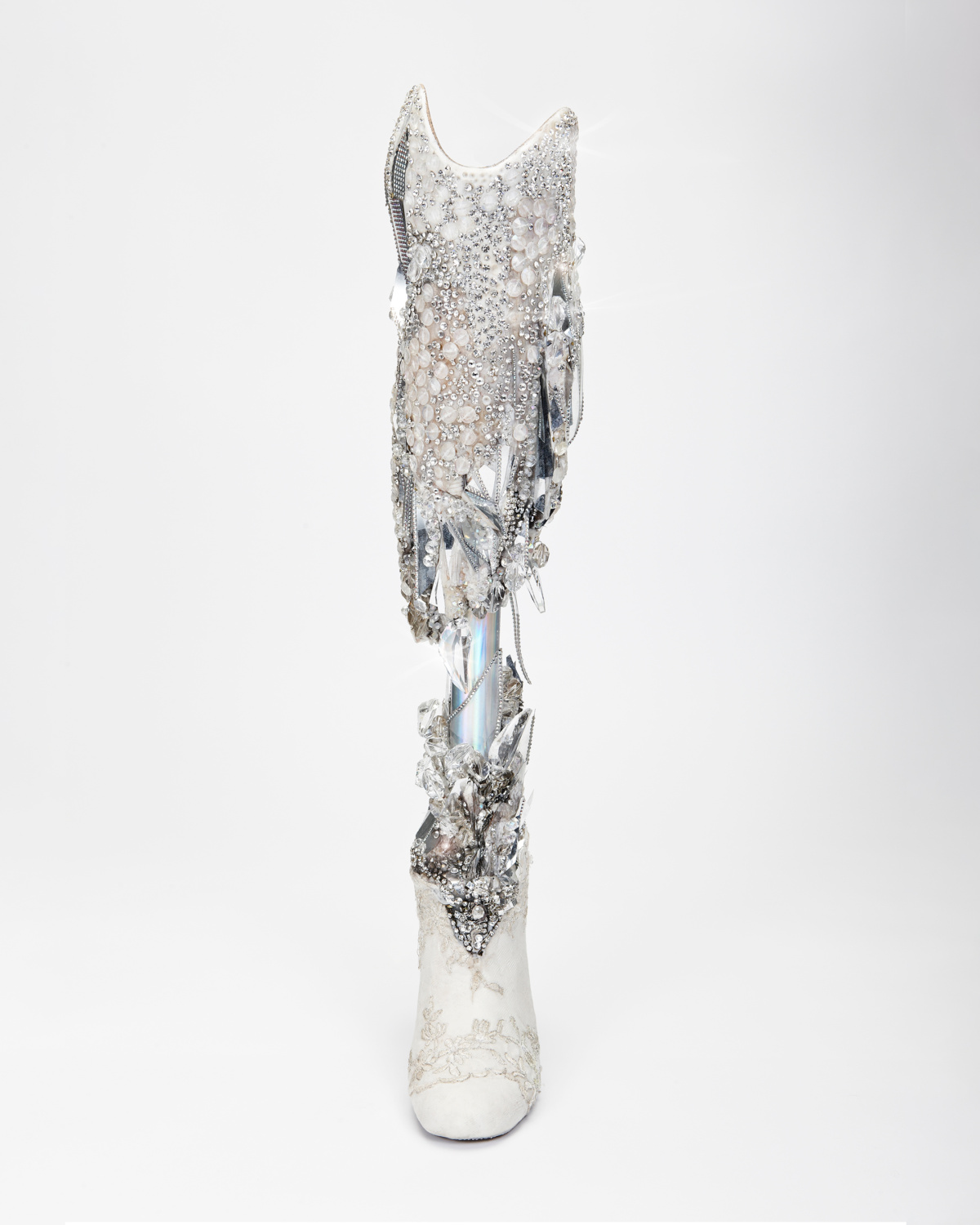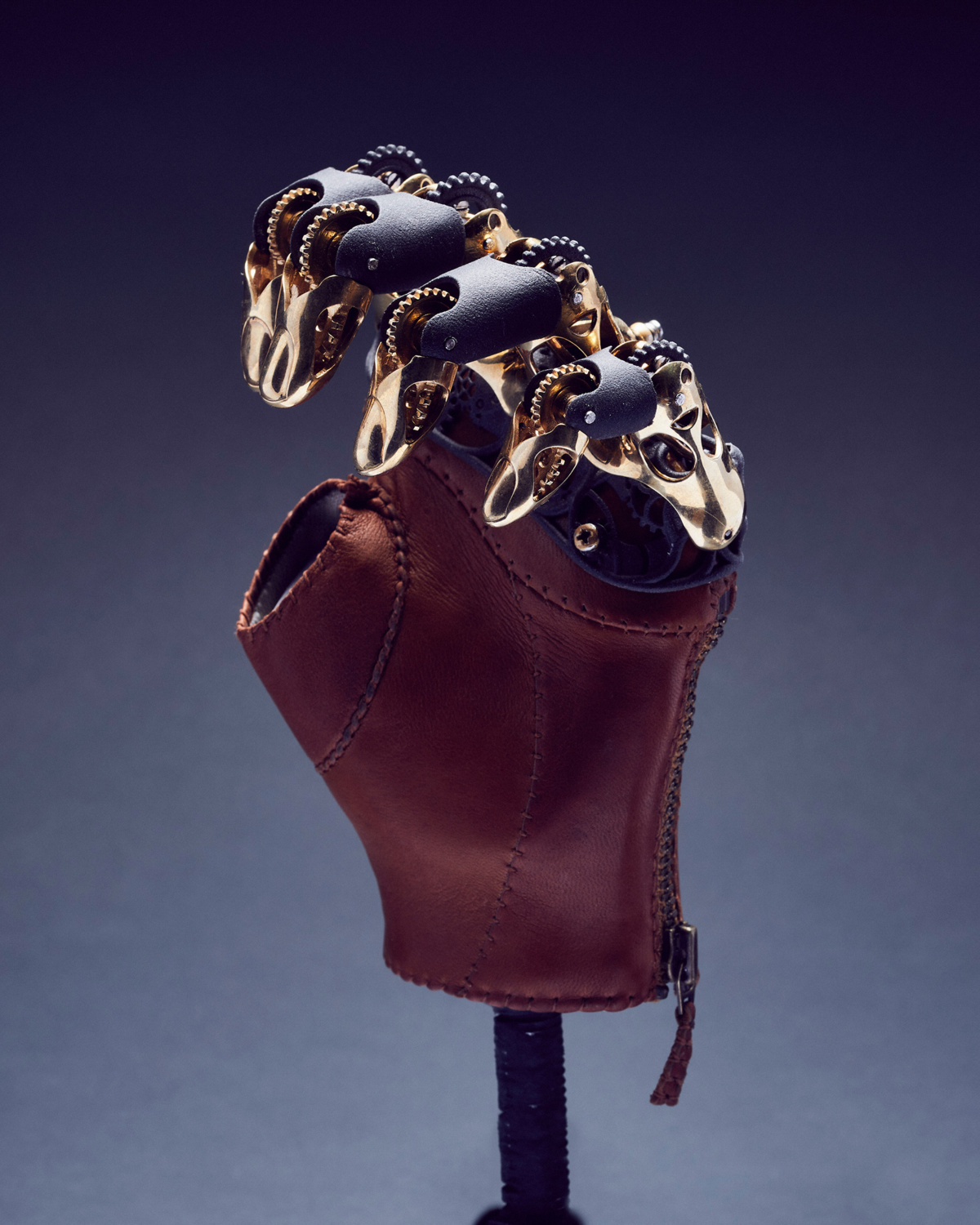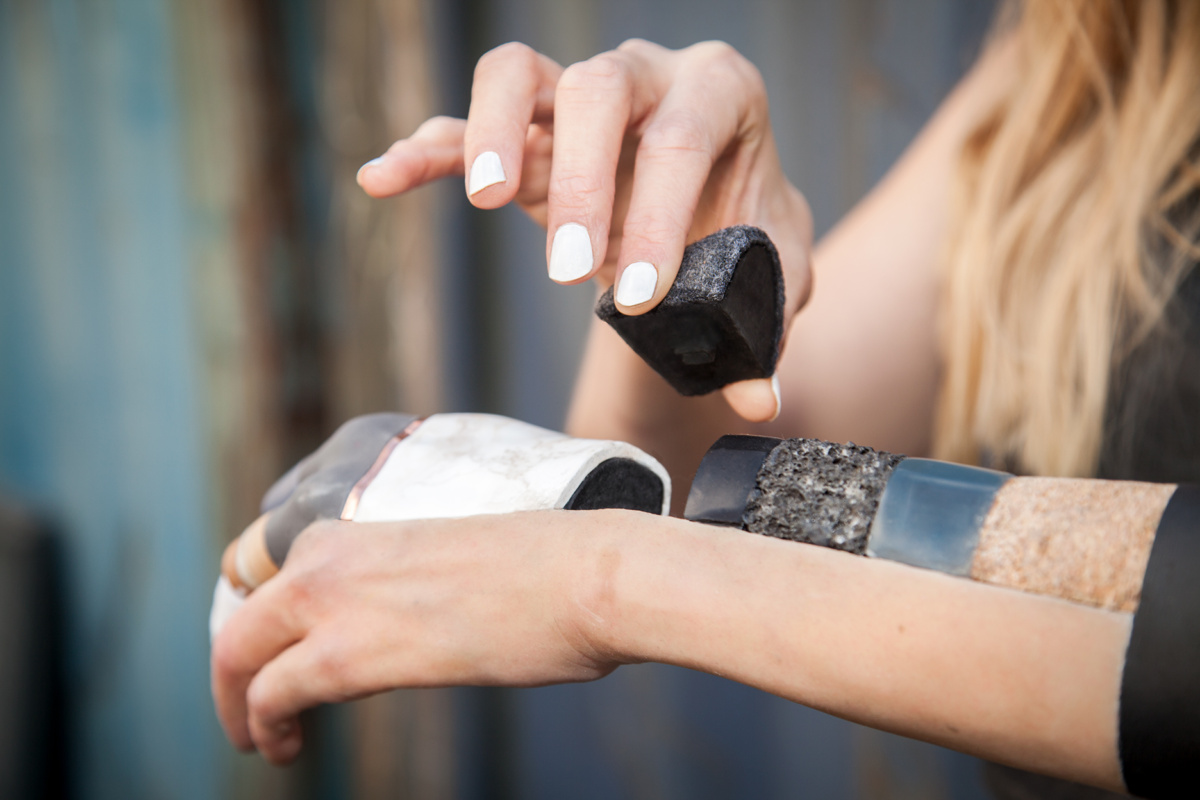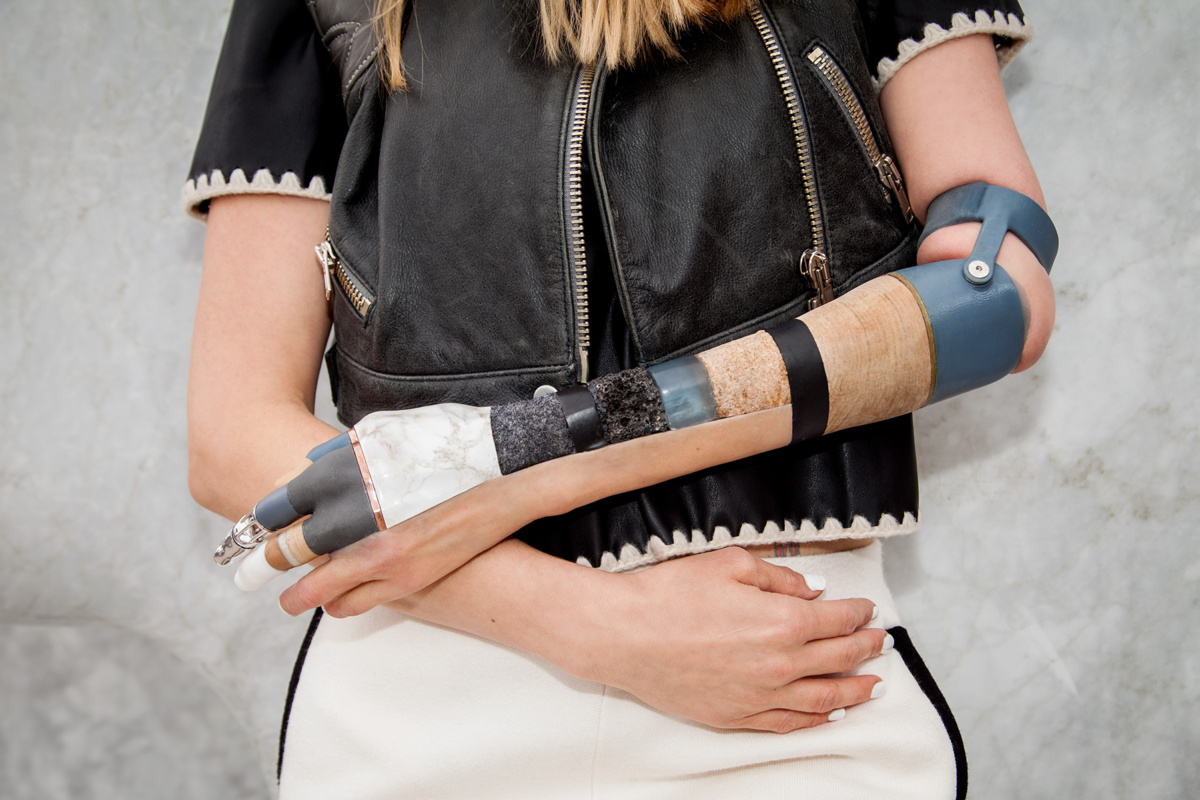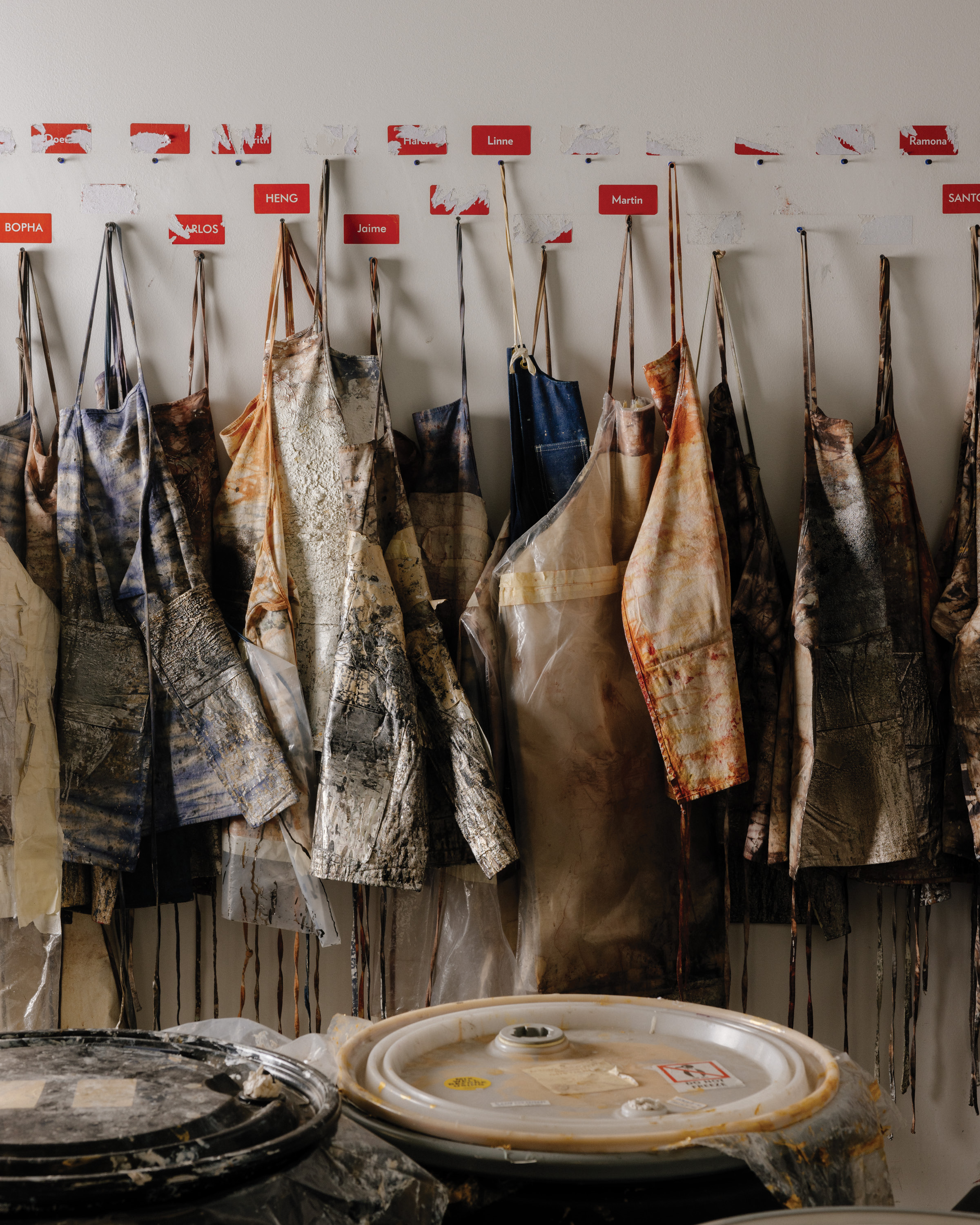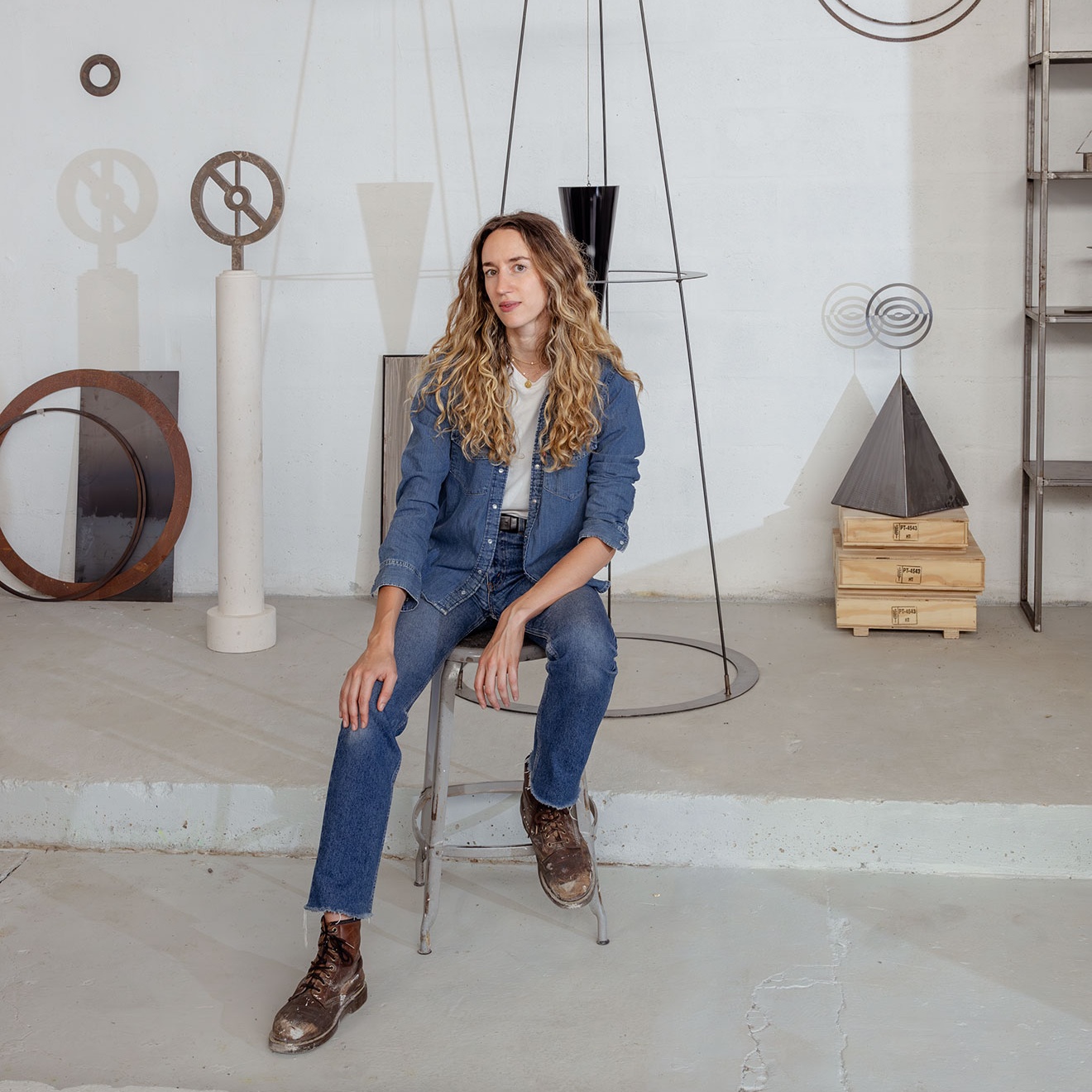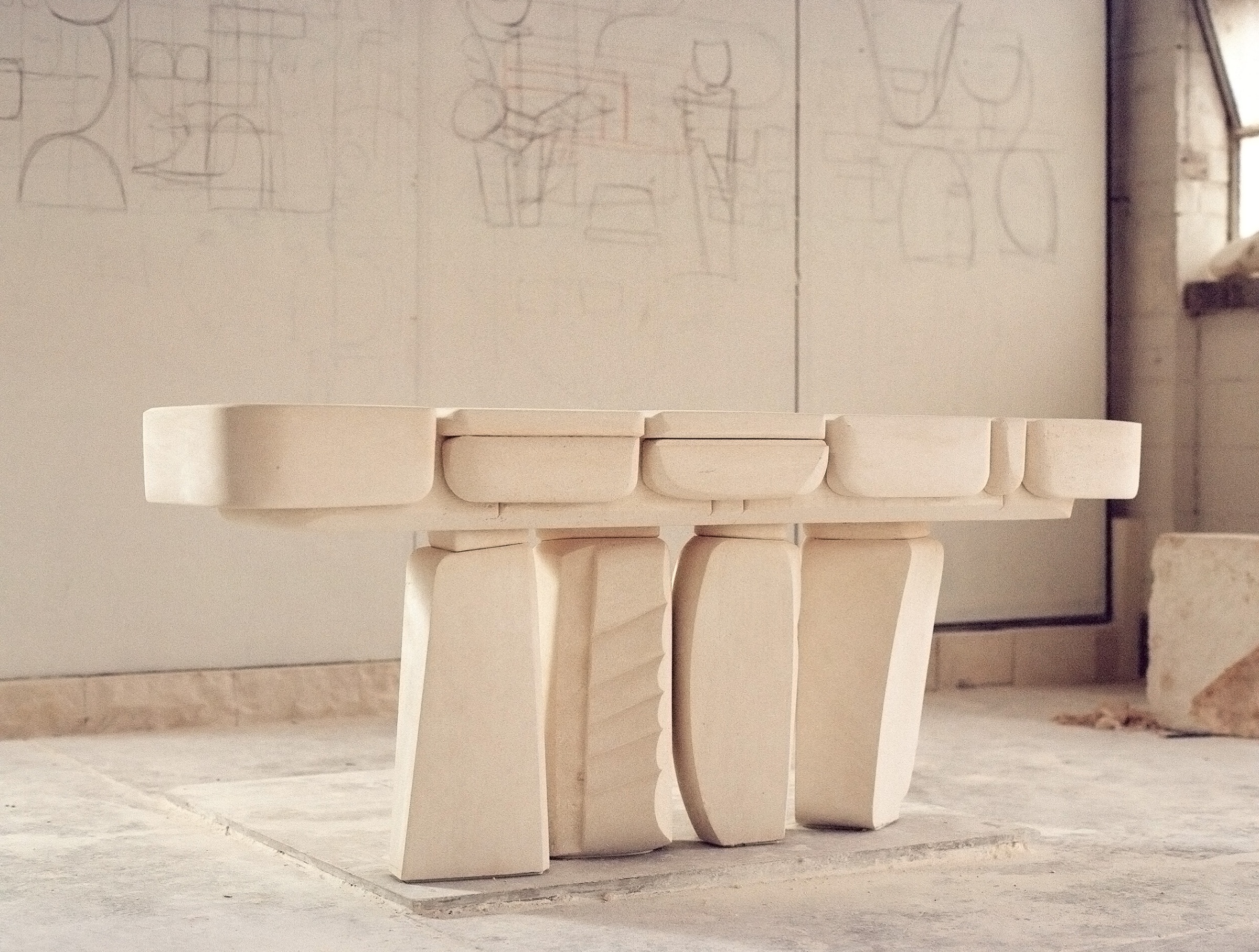Yves Béhar founded San Francisco-based fuseproject more than 20 years ago. Perhaps best known for the Sayl chair designed with Herman Miller, much of Yves’ work centers around AI and robotics in support of people’s physical and mental health. Yves designed the Happiest Baby SNOO—a FDA-approved robotic bassinet that rocks babies back to sleep and helps keep parents well-rested—with famous pediatrician Dr. Harvey Karp. The SNOO is now widely adopted by consumers, celebrities, and hospital NICUs. AI companions are also among fuseproject’s many futuristic designs, including one for the aging called ElliQ, a home robotic device, and one for kids on the spectrum, Moxie, that helps to develop emotional learning skills.
Artificial intelligence, mobility, beauty, function—Yves explores all of these in his work and looks for it in the work of others, like Sophie de Oliveira Barata in East Sussex, England, who founded the Alternative Limb Project. She designs and creates innovative prosthetics that often double as highly stylized and wearable art pieces.
We recently sat down with Yves and Sophie as they talked about their work and how design, technology, and beauty can overlap to benefit humanity. —Laura Rote
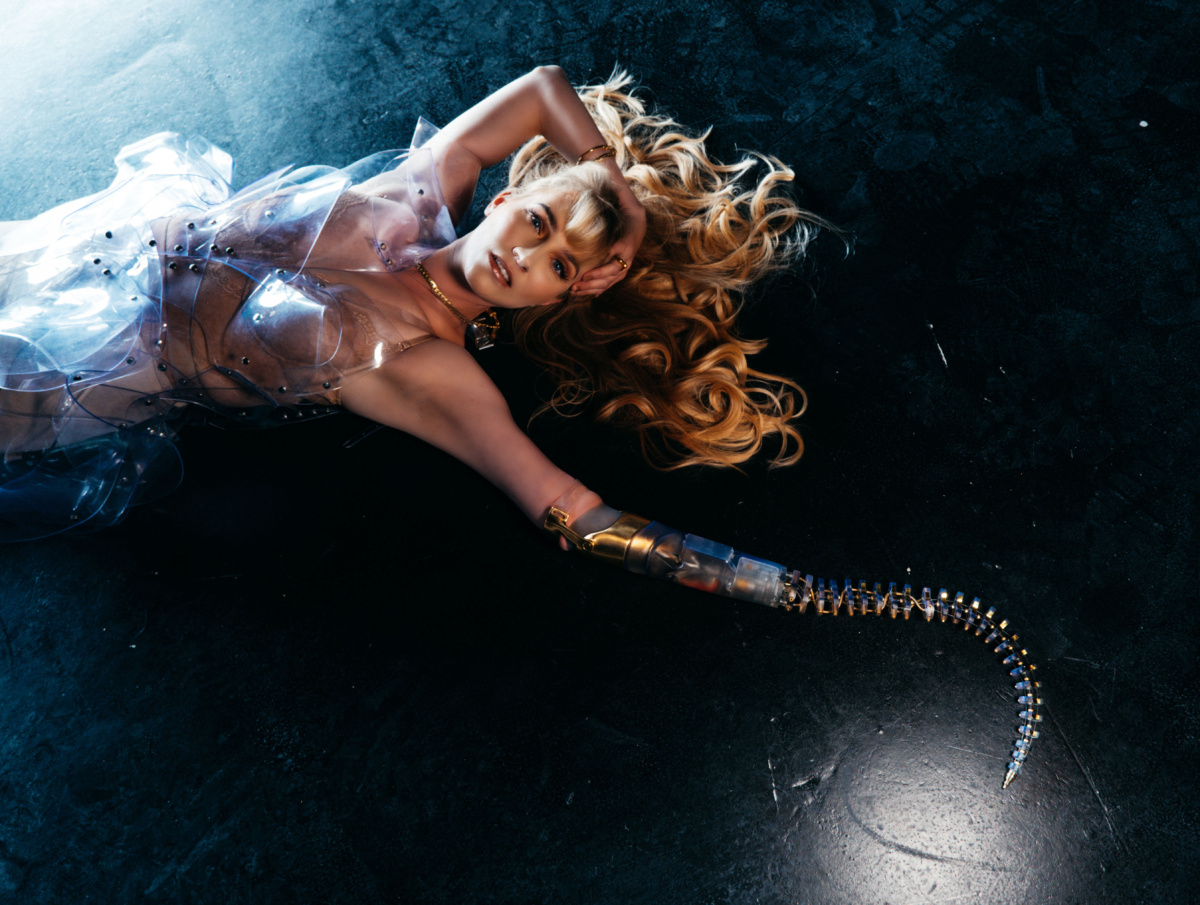
Sophie designed the “Vine” arm to be alternative in style, control, and function. It has controls in a shoe that move the arm with sensors connected to Bluetooth. Courtesy of Suede
Yves Béhar: The physical, self-affirming, expressive approach to the body and prosthetics is something I noticed in your work. I’m very happy to see it taking off for you and being a strong practice for you. How did you get into this field?
Sophie de Oliveira Barata: I have a special effects background. I studied art initially; I wanted to go into fine art, and then I was working at a hospital at the same time. I’ve always had art and medicine running parallel.
I got into special effects thinking maybe I’d go into the film industry. I was fascinated with merging reality and fantasy. I was interested in the medical world and decided to use my skills with prosthetics to learn how to make prosthetic limbs for amputees.
The job of making realistic limbs and matching to skin tones for amputees, allowing them to blend into society, was rewarding and ultimately challenging without the tricks of the camera. It was all sculpting in silicone—sculpting by hand and thin layers of different colored silicone, then I would color different skin tones and apply.
“There really wasn’t anything out there to celebrate people’s differences.” – Sophie
I learned to make fingers, toes, partial hands and feet, full arms, and leg covers. Because I was more creative I would get the more intriguing jobs or ones that required a little bit more imagination. There was a little girl I started seeing who had a realistic leg made every year through insurance. She wanted something a little bit different, something more personalized. She had all these images on her leg. Every year I would get her really excited about what she could have next time. I noticed that from a rehabilitation perspective, it was the design aspect that she was getting excited about. Rather than a version of what everyone else had, she had something quite unique; she started engaging with her family and friends about it. I thought, ‘Oh, there’s something here. This could be more like wearable art. We could go really sculptural with it.”
Then I found Viktoria Modesta. I looked up “amputee model;” it was a really crude web search. There was an image of her on Beautiful Bizarre magazine. She had her leg, kind of a realistic looking leg, just to the side, which in 2011 was quite bold. No one was really doing anything like that. She was modeling, doing hundreds of shoots at the time, and in just a handful of them she showed that she was wearing a prosthetic. I read about her having a self-elected amputation because of problems with her leg. It went against what everyone was saying around her. For her it demonstrated strength. She never looked back. The idea of having something quite alternative and celebrating her difference really excited her.
- “Spike Leg,” commissioned for Viktoria Modesta’s “Prototype” music video as part of Channel 4’s Born Risky campaign. Photo by Lukasz Suchorab
- Photo by Ewelina Stechnij
I started dreaming up ideas, and it spiraled from there really. At the time there wasn’t really anything like this out there. It was the bare prosthetic, or making it blend in, which I’m totally for as well. It’s all about choice. But there really wasn’t anything out there to celebrate people’s differences and an extension of their personality and taking ownership in a completely different way—and from an arts perspective.
I started meeting people from all different walks of life—ex military, performing artists. They all wanted people to see what was there as opposed to what was missing. It was that psychological aspect. It was removing the pity from the situation and bringing about enhancement and excitement and changing the conversation.
Yves: What I find very interesting is where you started—the film and special effects area. When I was in design school at ArtCenter many years ago my thesis partner and close friend was studying industrial design but went into special effects. He ended up doing a lot of special effects, but I find that imagination and craft in the movie industry interesting, where things get very sci fi and exaggerated very quickly. You went from that world to a world where you’re making something people can use every day. It’s not just for fantasy but something that is both functional and expressive of who they are and what they want to do.
Sophie: It’s that blending of the worlds that really excites me—that merging fantasy with reality. Doing prosthetics for film was fun, but it’s really rewarding doing it for real people. Also without the tricks of the camera, it’s super challenging to try and emulate the human body, which is forever changing. Films kind of influence reality and reality influences films, right?
Yves: I’ve joked around that creativity takes different forms; it can be utopian or it can be dystopian, but in the movie industry or in the media in general dystopian scenarios sell more. In design you have to instill a positive impression of the product. People want to feel smart and served by the things we make.
We try to instill—and you do that as well obviously—a positive level of thinking and self-affirmation in what we build, especially the things we build that people walk around with or live with.
Sophie: How do you feel about the word transhumanism? Do you feel that relates to any of the work you do?
Yves: As we become ever more digitized in our everyday life, technologically influenced in our everyday lives, I think it’s very important that the work of technologists and designers be humanistic in approach and less technological. Obviously there is a fear that these plugged in technological parts…
Sophie: Have a mind of their own?
Yves: Yeah, or are not entirely under our control. If anything we need more human connection, not less moving forward. You can see the issues percolating in a very big way with teenagers and technology and with sexuality and technology. There is a lot going on that can be quite dehumanizing and may not serve us as well as spending time with other humans.
When you start putting technological, digital parts or additions to our personas and personalities, we need to be very conscious—it shouldn’t take us away from our humanity. I try to have technology support us and be a partner. I always want technology to be discreet and in the background, not something that changes the nature of our conversations and our social interactions.
Sophie: That’s really interesting, and interesting that you said it’s associated with a lot of negativity, moving away from the human aspect. I’m not sure I should use the word transhumanism, but I guess the pieces I’m working with are like replacements, aren’t they? They are additions, but they need to be there regardless. In terms of design the human is completely at the center of it. You want this technology to reflect them in some ways.
- “Crystal,” commissioned for the Paralympics 2012 closing ceremony. The leg was designed to look luxurious, dazzling, striking, and dangerous. Photo by Omkaar Kotedia
- Partial hand prosthesis for Linden in 3D printed brass. Photo by Alun Callendar
Yves: Your approach, and somewhat mine, is supporting the human the way they are today—to get back to walking or have social connections and human connection. I grew up as a young designer in San Francisco in the Bay Area, and in the late ’90s I went to a couple of cyborg conventions where people were walking around with big backpacks and visual enhancement features and computers that were in the periphery of their eyes and whatnot. It was super interesting to see, but not something that stylistically or relationally you felt was serving their users so much.
Sophie: People automatically jump to films and think of robotic arms. It’s interesting because in prosthetics, a lot of upper limb amputees or people born with limb difference don’t bother wearing prosthetics; they find them really cumbersome, or they have all the technology, but they’re really heavy and the battery wears out quickly. They end up using that other arm anyway.
Yves: What’s your approach to the functional parts because that is, as you said, very challenging and heavy from an engineering standpoint? How do you solve those functional needs? I see the benefits in terms of cosmetics and personal self-expression, et cetera, but robotics are hard.
Sophie: Ultimately the best design is function and aesthetics. It’s like a triangle. You’ve got the fit and the function and then you’ve got the aesthetics. If you want to really push something, then sometimes other corners have to suffer and it becomes not an equal triangle anymore.
If you really want to make a point, and some of the pieces I made or collaborated with others on to make are more concept pieces; they’re not every day. That’s more driving the idea of something from a really strong artistic angle, and then people can fill in the rest. I’m not trying to make something functional every day, but that could be done, too. It just depends on what the goal is and what I’m working to do. If I’m working with a realistic limb, for example, I will work around the componentry that has been fitted by the prosthetist, usually wrapped in foam and snapped to mirror the other limb. I take a cast of this and work on the cast to create the skin. I remember making some realistic hand skins to go over the bebionic, which is a really powerful electronic hand, when it came out. It was being done for the military. It looked like an ET hand. I was like, “Can you not just embrace the technology underneath this?” That robotic aesthetic is now a dominant aesthetic.
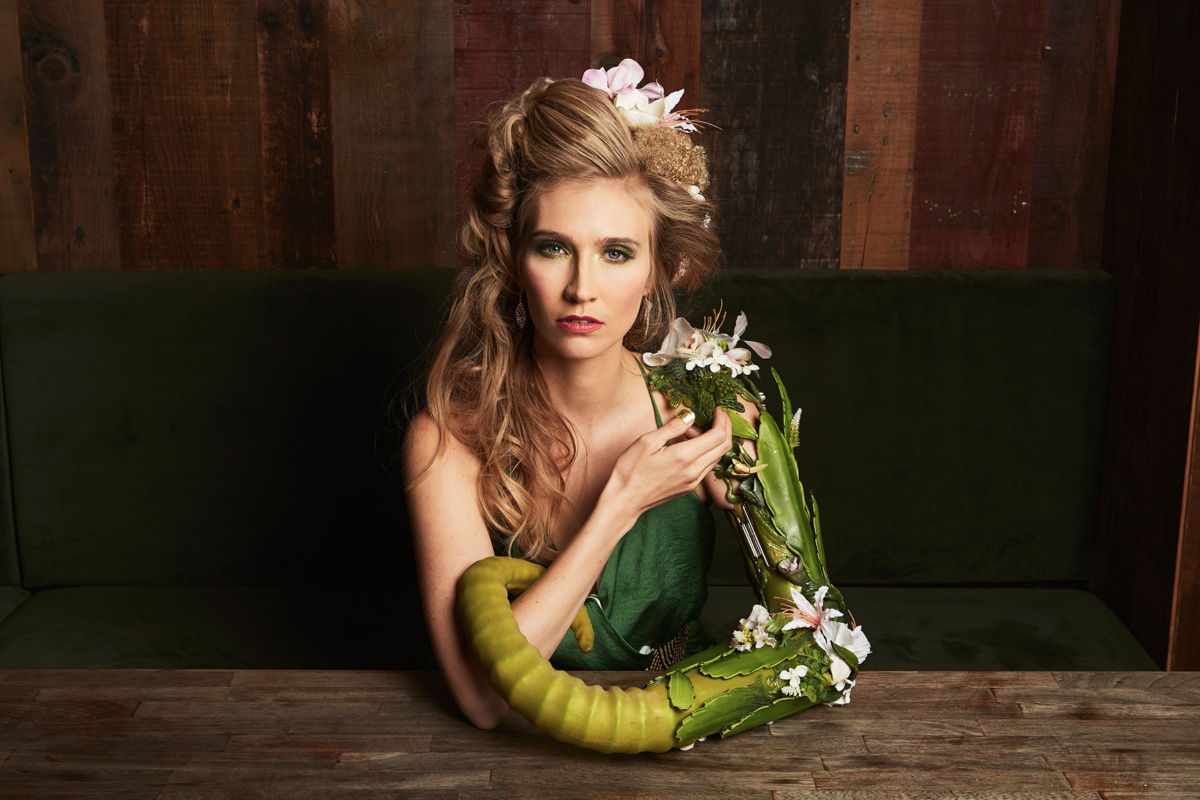
Vine for Kelly Knox. Photo by Omkaar Kotedia
I know people who use little sensors—they’ve got so many sensors in the fingertips and they’re doing research—and I just feel like that is being done already. I’m interested in the alternative functions.
The most alternative piece I’ve made that I’m proud of working with other people on is the Vine arm, which was alternative in style, control, and function. It had controls in the shoes, and when she deliberately moved her bigger toes against each sensor it Bluetoothed to the arm. The socket was gold plated, and the socket that housed the electronics was 3D-printed in clear resin. The vertebrae sections were also 3D-printed. When she moved her toes they would hit the four sensors and send a signal to move the vine in any direction.
I’m interested in coming at prosthetics from a fresh perspective and exciting all people about the body and differences.
Do you cater to aesthetics in your work?
Yves: Oh, absolutely. People need to be proud to wear something. They need to feel like it’s not a visual or an aesthetic that puts them in the category of patients, or doesn’t create this feeling of being marginalized. It’s very important to have an aesthetic that brings curiosity. This is something I noticed with, for example, tennis players or skiers who wear knee braces; they’re quite proud of it. They’re proud of whatever that looks like—usually very mechanical, very masculine. People don’t want to be overly burdened, sometimes by something that is medical, and they want more control. They want to feel like they’re in control of the way a support or enhancement looks.
“One of my principles of design in this age of robotics and AI is to be very careful to not create emotional dependency on these products.” – Yves
Aesthetics are very important to all of these projects, and they also project the right impression. I never want our products to create dependency, for example. If it’s too cute or cuddly it tends to create an emotional dependency that replaces or skews human relationships. If it’s more like a beautiful piece of furniture or body enhancement you can be proud of, it feels like you are more in control of it. One of my principles of design in this age of robotics and AI is to be very careful to not create emotional dependency on these products. I’d rather have them appear in people’s lives more like a companion you can decide to have in the foreground or not in your life, not something you feel dependent upon.
You do have to deal with a lot of fears people have toward things that are mechanical or digital or technological, as it comes into their intimate lives, as it comes into their homes. For example, it was really an interesting sociological experiment I was doing while we were developing the Happiest Baby SNOO, the smart bassinet with Dr. Harvey Karp. For about five years people would ask, “What are you working on that’s exciting?” And I would always say, “I’m working on this new project; it’s a robot that takes care of your baby.” It was a slight provocation in the way I was presenting that, and immediately people’s imaginations went exactly to my description, which is a robot carrying your baby around or taking care of it. 100% of the time as a response I got, “That’s not going to work. I would never do that” or “That’s scary.” It’s a normal, absolutely important reaction.
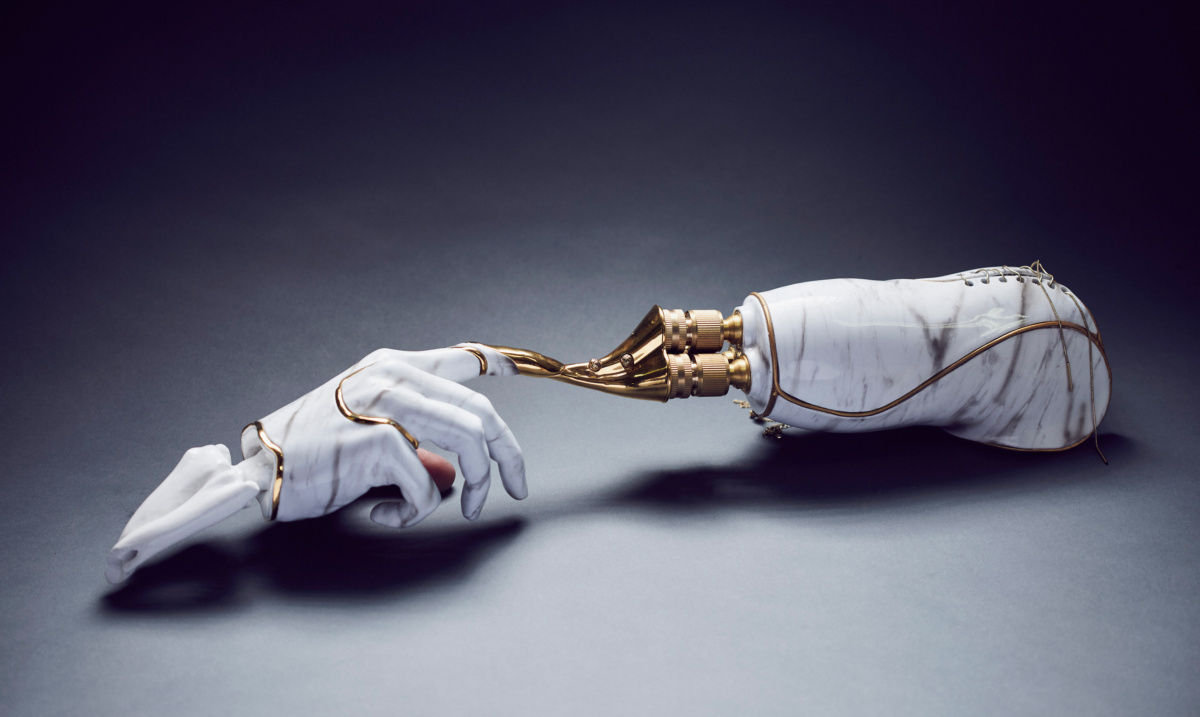
Sculptural piece for performing artist Lucky Love. Photo by Alun Callendar
As designers it’s important to hear those fears. While I was doing the project, obviously I was designing a robot that takes care of infants in the first six months of life, but we designed it as a beautiful piece of furniture that sits in the parents’ room or in baby’s room in a way that doesn’t advertise its technological capabilities, even though it does perform what parents describe somewhat as a miracle for them on a nightly basis.
Being aware of how much the technology or enhancement becomes self-expression and style, and outwardly owning that becomes very empowering. It becomes empowering to say yes, this is a separate arm, but it’s on my real arm, and now you think it’s cool, and we can move on and talk about other things. I think it’s affirming for somebody with a difference like that.
Sophie: This guy who was military said to me, “I really want to see my toes, but everything else you can be really playful with.” I took the hairs on the back of his neck and put them on the toes, and then the rest was quite abstract. The foot was removed from the leg—as in there was a distinctive separation with this graphic look of tendons and everything going on to the forefoot. It was quite designed; it wasn’t gruesome at all. I went for a walk with him and we got stopped straight away. This guy was like, “Wow! OK, so that’s your leg, right? OK. Hang on. That’s your foot. So what’s going on up here?” The military guy was just like, “Well, how can that be my foot? It’s obviously not my foot.” Then we had this humorous conversation. He was like, “That was just so refreshing.” In the past it would have been pity or people not wanting to look. He said it was like he had the upper hand—like he was playing a trick and confusing people in a positive, dumbfounding way.
What age is most accepting of the technology you provide?
Yves: Different technologies address different conditions, and the projects we work on are aimed at very specific groups of people. I find that this is really important to me—using the latest technology, the latest AI, the latest robotics to serve people who typically are not addressed by design. Design and technology tend to address people in the comfortable, middle part of their lives when they’re in good shape. Mainstream tech tends to be general purpose, and that’s also often when we run into trouble because these general purpose technologies don’t perform as well as we expect them to. On the other hand, tech and design focused on health care or education for the old, the young, and people with specific conditions delivers successfully and makes their lives better.
- Materialize arm for Kelly Knox. Photo by Simon Clemenger
- Materialize arm for Kelly Knox. Photo by Simon Clemenger
When you are serving an aging person or somebody who needs to walk again after a stroke, when you are serving a kid with a learning disability or new parents who basically need more sleep, technology is very good at solving specific problems for underserved people. It’s important for both parties, meaning it’s important for these humans in need to have these solutions, and it’s also important because technology is getting such a bad rap. It easily triggers fear when you see robots carrying objects or doing backflips or running aggressively toward you—these robot dogs that give you a sense of danger because they have an aggressive looking stance. Technology gets a bad name as it’s often superfluous for everyday life. On the other hand, it has real purpose when it addresses real and specific needs.
It’s very important to show that technology is much more like a companion—a companion to an aging person, a companion for a child or a young student, a companion to a parent, rather than something that looks like it will or can take over our existence. I also think technologies work better when they’re more narrowly focused on solving a problem in my life because it’s built for that purpose; built for purpose is important versus built for entertainment or built for general purpose. “I want a robot that cooks and cleans for me.” To me, personally, that’s a lot less attractive and creates a lot more fear.
Sophie: What inspired you to get into this industry?
Yves: I always felt like design was about service. Design is a generous field. We think about our users as the most important part of any project. Seeing how little attention there is to user experience, comfort, personal expression, to pride of use or ownership and medical and health care and well-being types of device and experiences. There’s a huge gap in what people experience in the business or commercial world compared to what they experience in the health care environment. There’s a huge gap in design for consideration of people’s needs and feelings. Design creates that type of connection, that type of success, and that is needed both commercially but also emotionally for any of these projects to do well. People need to consider them something that really complements all the facets of their lives, not just a functional appendage.
A version of this article originally appeared in Sixtysix Issue 10 with the headline “Yves Béhar in Conversation with Sophie de Oliveira Barata.” Subscribe today.
